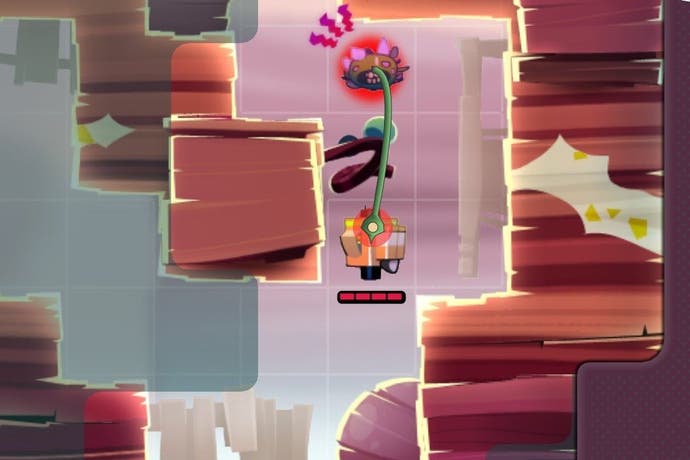Nova-111 fills its turn-based world with real-time elements
And it works.
Stalactites hang from the ceiling while stalagmites grow from the floor. Every few months I have to look this up again, because I can never get the distinction fixed in my head - and because games just love stalactites. (Even now, it wouldn't surprise me if I've gotten it wrong.)
There is a certain order to stalactites in games, too: an innate understanding of the way they should work. Stalactites fall on you once you walk underneath them, but it's rarely an instantaneous process. Stalactites give you warning before they fall. They shake for a few seconds and then they detach. They're death from above, but polite with it. This probably doesn't hold true for the real world.
Nova-111 is the latest must-buy for any stalactite lovers out there, and it actually finds something fresh in this old video game prop. Nova-111 is a game where you move a little spaceship around a cave network in turns, moving one block across the map and then pausing, while most other things in the vicinity do the same. The local stalactites are definitely not turn-based, however: they are triggered by your turn, but they then fall in real-time. It's almost an affront, really. Don't you know the rules?

In truth, this is the glory of Nova-111, because it's a puzzley adventure in which real-time elements are constantly intruding into a turn-based world - and with surprisingly brain-scrambling results. The first enemy type you encounter is a sort of beak mounted in jelly. It trots after you turn after turn, and attacks following a turn that signals it's getting angry. Your options here are pretty decent. You can dodge the attack and then whack it when it's recharging, or you can even lure it into attacking one of its own kind by positioning an enemy on either side before getting out of the way. Or, you can lure it under a stalactite, and smash it to pieces between turns. Catch it while it's napping! It's particularly satisfying when that happens.
This playful relationship is explored throughout the rest of the game's enemies - at least the ones I've come across in a morning of playing the first few stages. Blinkers warp around the screen on a turn-by-turn basis, but leave bombs behind that explode in real-time. Latches grab you with a wet tongue and then unleash damage if you don't smack them into oblivion quickly enough, encouraging you to rush turns as you dash to get to them, possibly with devastating results. Elsewhere, there's a sort of electrical clam guy who fires lasers that move one turn at a time, and there are explodey guys who wander around turn-by-turn but then count down to a real-time blast when hit. All of these are deadly, but they can all be set on each other. The game is sort of a dance, really, as you position yourself to spring a trap and then get out of the way while mayhem unfolds. The joy here is in finding the hidden choreography to each elbowy little map.
Your own abilities scale along with your foes. After a few minutes I had the ability to place bombs myself and even fire a laser beam, that takes a handful of turns to recharge. The most fun, however, comes from the limitations: the line-of-sight shadowing on the map that means you're constantly in danger of walking into an ambush, the basic attack which requires you get really close to your enemy before you can do any damage.
Over time I suspect that something like a speedrun compulsion will kick in, as you work out the path through each level that uses the minimum amount of turns. I'm not sure I'll stick around for that kind of stuff, but I am probably going to work my way through the whole campaign and into the realm of New Game + regardless. Nova-111 is ingenious and economical: it combines basic elements that are traditionally kept apart, and it does it with real flair.

